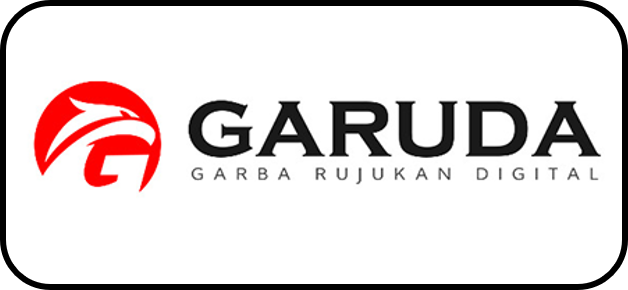Equity Market Timing dan Struktur Modal
Downloads
This study is an empirical testing of equity market timing and capital structure at firms which are doing IPO 2001 and 2002. The aims of this study are to test about the effect of equity market timing to capital structure and to test the persistency of the effect of equity market timing to firm's capital structure in Indonesia. This study also used control variable, that asset tangibility, size and profitability. To analyze the data, this study used multiple regressions with SPSS 16.0 to test independent and dependent variables. The result suggest that the equity market timing has not significantly negative effect to the firms' capital structure which used IPO 2001 and 2002 that are listed in BEI, and the effect of equity market timing to the firms' capital structure are not persistent that the negative effect of equity market timing to the firms' capital structure disappear within third years after IPO.
Asquith, P dan Mullins. 1986. Equity Issues and Offering Dilution. Journal of Financial Economics, 15:61-89.
Baker, Malcolm, and Jeffrey Wurgler. 2002. Market Timing and Capital structure. Journal of Finance, Volume 57:1-32.
Bie T. De. dan Leo De Haan. 2007. Market Timing dan Capital Structure: Evidence for Dutch Firms. De Economist, 155:183-206.
Brigham, Eugene F. dan Joel F. Houston. 1998. Fundamentals of Financial Management. Eight Edition. Orlando: Dryden Press.
Brigham, Eugene F. dan Michael C. Ehrhardt. 2005. Financial Management: Theory and Practice. 11th Edition. Cengange Learning
Brigham, Eugene F. dan Joel F. Houston. 2001. Manajemen Keuangan. Edisi 8, Jakarta: Salemba Empat.
Copeland, E. Thomas. dan Fred Weston. 1992. Managerial Finance. Ninth Edition. Orlando: The Dryden Press.
Ghazali, Imam. 2005. Aplikasi Analisis Multivariate Dengan SPSS. Edisi Ketiga. Semarang: Badan Penerbit Undip.
Hakim, Abdul. 2000. Statistik Induktif. Yogyakarta: Penerbit BPPE Yogyakarta.
Husnan dan Pudjiastuti. 2011. Dasar-Dasar Manajemen Keuangan. Edisi 6. Yogyakarta: UPP STIM YKPN
Kayhan, A. dan Titman,S. 2007. Firms'Histories and Their Capital Structure. Journal of Finance 60:2575-2619.
Lee, et.al. 2012. Capital Structure Timing In Markets With Different Characteristics. The International Journal of Business and Finance Research, Volume 6:53-66.
Lind, et.al. 2007. Teknik-Teknik Statistika dalam Bisnis dan Ekonomi. Jilid 1. Jakarta: Salemba Empat.
Lind, et.al. 2007. Teknik-Teknik Statistika dalam Bisnis dan Ekonomi. Jilid 2. Jakarta: Salemba Empat.
Martono, dan D. Agus Harjito. 2005. Manajemen Keuangan. Yogyakarta: EKONOSIA
Mahajan, Arvind, and Tartaroglu, Semih. 2008. Equity Market Timing and Capital Structure: International Evidence. Journal of Banking and Finance 32: 754-766.
Megginson, William L. 1997. Corporate Finance Theory. USA: Addison-Wesley Educational Publishers Inc.
Modigliani, Franco dan Merton H. Miller.1963. Corporate income taxes and the cost of capital: A correction, American Economic Review 53: 433-443.
Myers, S. C. dan Majluf, N. S. 1984. Corporate financing and investment decisions when firms have information that investors do not have. Journal of Financial Economics13: 187-221.
Rajan, R. and Zingales, L. 1995. What Do We Know About Capital Structure? Some Evidence from International Data. Journal of Finance 50:1421-1460.
Ross, et.al. 2009. Pengantar Keuangan Perusahaan. Edisi 8. Jilid 2. Jakarta: Salemba Empat.
Russel, Philip S dan Ken Hung. 2008. Does Market Timing Affect Capital Strucrure?: Evidence for Chinese Firms. Working Paper.
Saad, Meiyanne D. Permata dan Helson Siagian. 2011. Sentimen Investor, Kendala Keuangan, dan Equity Market Timing. Finance and Banking Journal, Volume 13:1-15.
Setyawan, Ignatius Rony. 2011. An Empirical Studt on Market Timing Theory of Capital Structure. International Research Journal of Business Studies, volume 4:113-119.
Sudana, I Made. 2011. Manajemen Keuangan. Surabaya: Penerbit Erlangga.
Weston, J. Fred dan Copeland. 1999. Manajemen Keuangan. Jilid 2. Terjemahan oleh Jaka Wasana dan Krisbandono. Jakarta: Kina Rupa Aksara.
Authors who publish with this journal agree to the following terms:
1. The author(s) hold the copyright of the article without restrictions.
2. The author(s) retain publishing rights without restrictions
3. The legal formal aspect of journal publication accessibility refers to Creative Commons Attribution (CC BY).
















